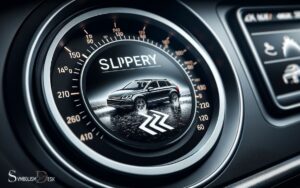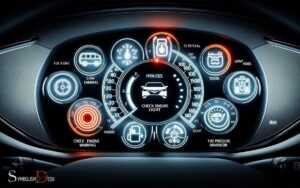What Are Different Car Symbols? Warn!
When a car’s engine light illuminates, it can indicate a variety of issues that need attention. Different car symbols serve as visual indicators to warn drivers about potential problems or to provide important information about the vehicle’s status.
These symbols, displayed on the dashboard, can include the oil can symbol, battery light, brake system warning, tire pressure monitoring, airbag indicator, coolant temperature, and fuel level warning, among others.
Understanding these symbols is crucial for maintaining vehicle safety and performance.
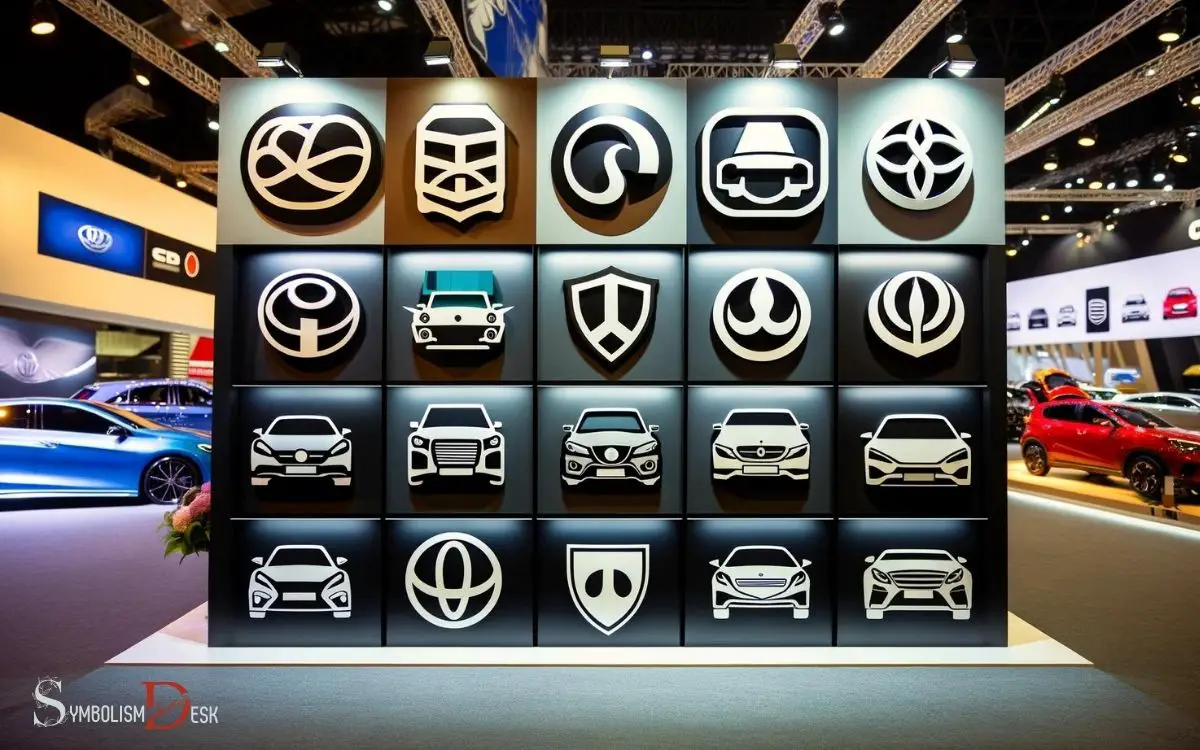
Key Takeaway
Engine Light
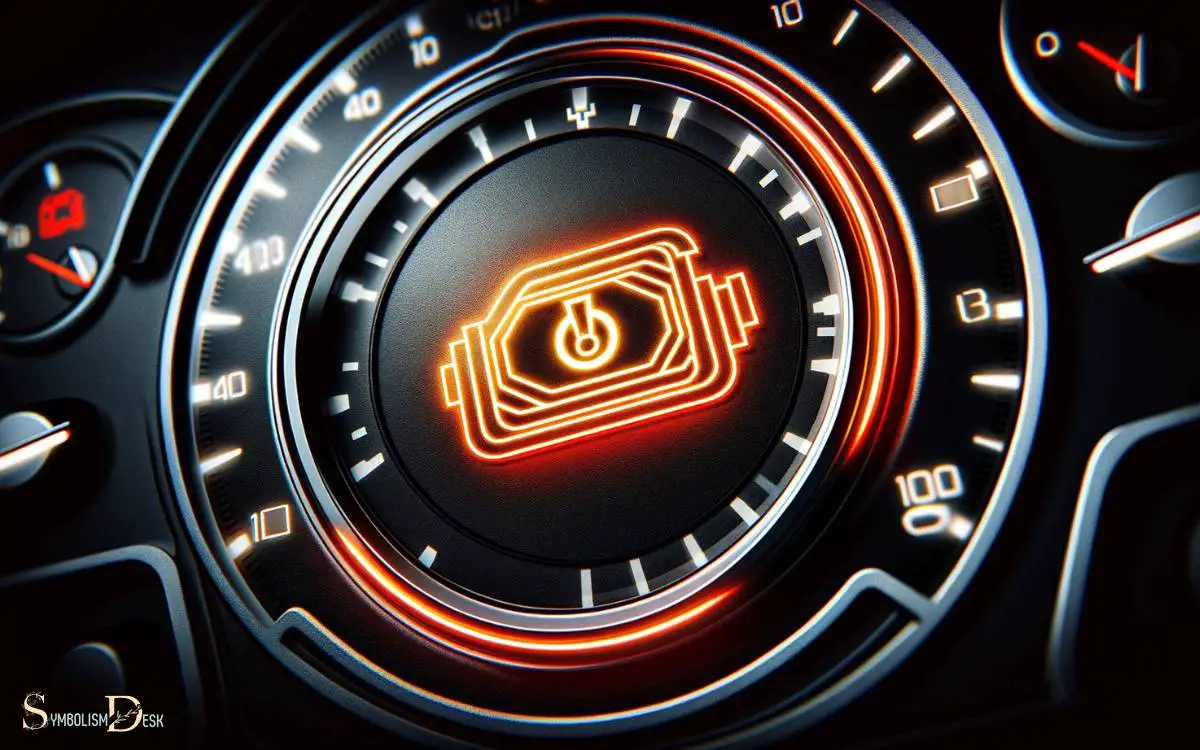
Indicating potential issues with the vehicle’s engine, the engine light illuminates on the dashboard of modern cars.
The engine light, also known as the malfunction indicator lamp (MIL), serves as a crucial warning system. When it comes on, it signifies that the car’s engine control module (ECM) has detected a problem related to the engine, transmission, or emission control systems.
This could range from something as minor as a loose gas cap to more serious issues like a faulty oxygen sensor or catalytic converter.
To determine the specific problem, a diagnostic scan tool is typically used to retrieve error codes stored in the vehicle’s computer.
Addressing the underlying issue promptly is essential to prevent potential damage and ensure the vehicle operates at its optimal level.
Oil Can Symbol
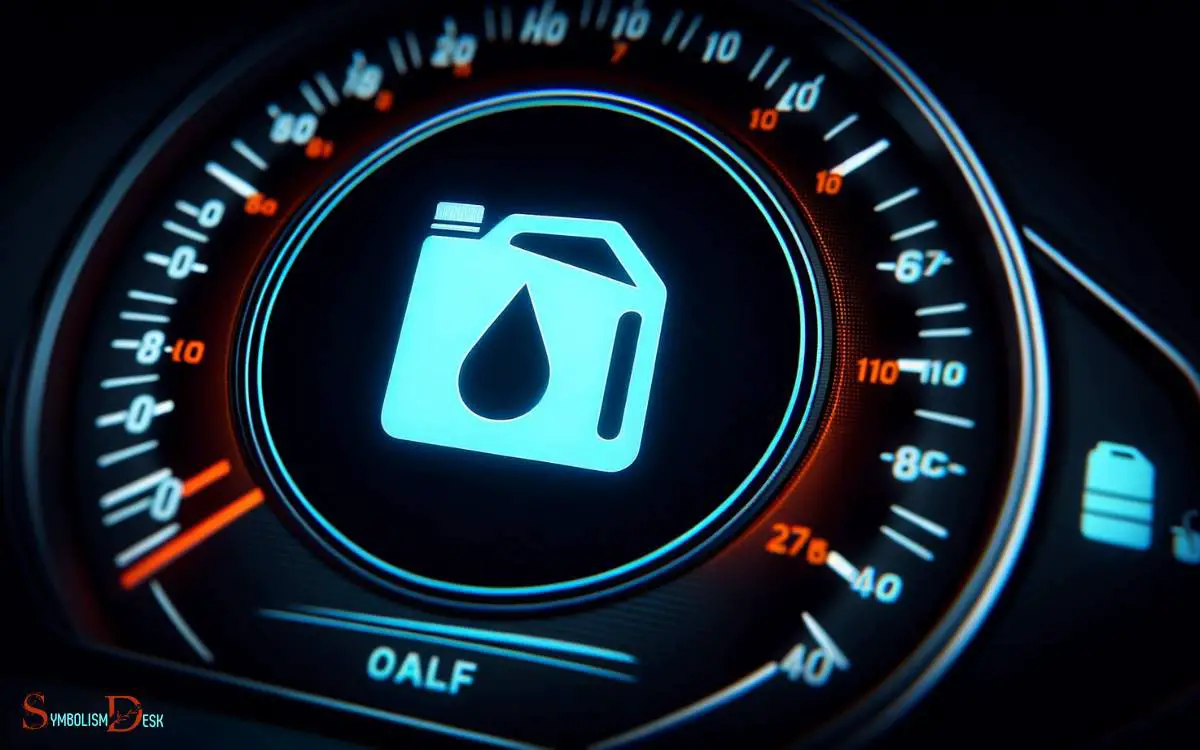
The oil can symbol, often found on the dashboard of a car, signifies the need for attention to the vehicle’s oil level or pressure.
If the engine light is on and the oil can symbol lights up, it could indicate a more serious problem with the engine that requires immediate attention.
- The oil can symbol typically indicates that the oil level is low and needs to be topped up.
- It could also signal low oil pressure, which may lead to engine damage if not addressed promptly.
- In some vehicles, the oil can symbol may illuminate when the engine oil needs to be changed.
- Ignoring the oil can symbol can result in decreased engine performance and efficiency.
- Regularly checking the oil level and addressing any issues indicated by the oil can symbol is crucial for maintaining the health of the engine.
The next subtopic to explore is the ‘battery light’.
Battery Light
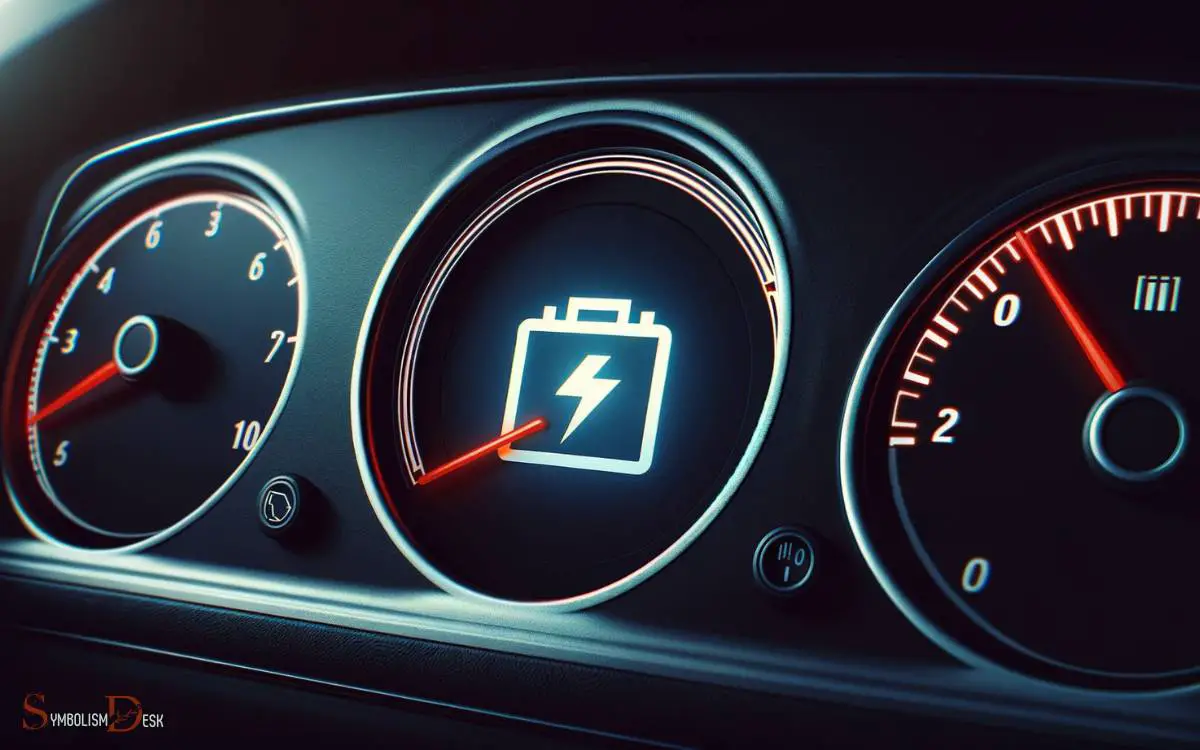
The battery light on a car’s dashboard serves as a warning indicator for potential electrical system issues.
Understanding the various meanings of the battery light, such as a weak battery or a faulty alternator, can help drivers address potential problems before they escalate.
Additionally, being able to interpret warning signals from the battery light can prevent unexpected breakdowns and ensure the vehicle’s reliability.
Battery Light Meanings
The battery light alerts drivers to potential issues with the vehicle’s electrical system.
When this light comes on, it can indicate various problems that need to be addressed:
- Faulty Battery: The light may indicate a problem with the battery, such as low voltage or a failing battery.
- Faulty Alternator: A malfunctioning alternator can cause the battery light to illuminate, as the alternator is responsible for charging the battery while the engine runs.
- Electrical System Issues: It can also signal problems with the electrical system, such as a faulty wiring or a malfunctioning component.
- Sensors Malfunction: Sometimes, the battery light may come on due to a malfunction in the sensors that monitor the vehicle’s electrical system.
- Loose or Damaged Belts: Issues with the drive belt or serpentine belt that powers the alternator can trigger the battery light.
Addressing Battery Light
When the battery light comes on in a vehicle, it signals potential issues with the electrical system, requiring immediate attention to prevent further damage.
The battery light indicates a problem with the charging system, which could stem from a faulty alternator, a worn-out serpentine belt, or a weak battery. Ignoring the battery light can lead to a drained battery, stalling, or being stranded on the road.
To address this issue, the driver should first check the battery terminals for corrosion and ensure they are tightly connected.
If the terminals look fine, it’s crucial to have the vehicle inspected by a qualified mechanic to diagnose the exact cause of the battery light and prevent potential electrical failures. Prompt attention to the battery light can save the driver from more extensive and costly repairs.
Understanding Warning Signals
Drivers should be aware of their vehicle’s warning signals, including the battery light, to promptly address any potential issues with the electrical system.
When the battery light comes on, it indicates a problem with the charging system or the battery. Understanding this warning signal is crucial for maintaining the vehicle’s electrical components.
Here are a few key points to consider:
- Check the Battery: The first step is to inspect the battery for any visible signs of damage or corrosion.
- Inspect the Alternator: A malfunctioning alternator could be the cause of the battery light, so it should be checked by a professional.
- Electrical System Test: Conducting an electrical system test can help diagnose any underlying issues related to the battery light.
- Address the Issue Promptly: Ignoring the battery light can lead to a dead battery or other electrical problems.
- Seek Professional Help: If the battery light continues to illuminate, it’s important to seek help from a qualified mechanic.
Brake System Warning
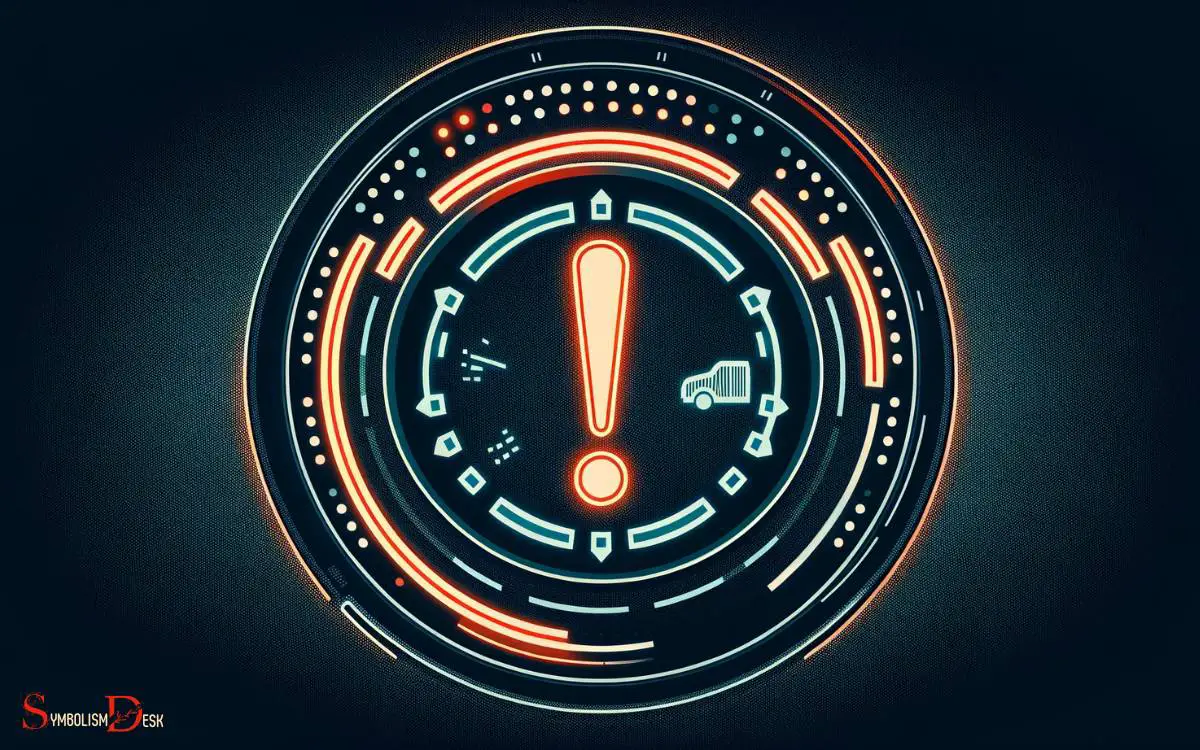
If a brake system warning symbol illuminates on the dashboard, it indicates a potential issue with the vehicle’s braking system.
This warning light typically resembles an exclamation point inside a circle, often accompanied by the word “Brake.” It could signal problems such as low brake fluid levels, worn brake pads, or a malfunction in the anti-lock braking system (ABS).
Ignoring this warning could lead to reduced braking capability, compromised vehicle control, or complete brake failure. Immediate inspection by a qualified mechanic is crucial to diagnose and rectify the issue.
Drivers should refrain from driving the vehicle until the problem is resolved to ensure their safety and the safety of others on the road. Regular maintenance and prompt attention to brake system warnings are vital for safe and reliable vehicle operation.
Tire Pressure Monitoring
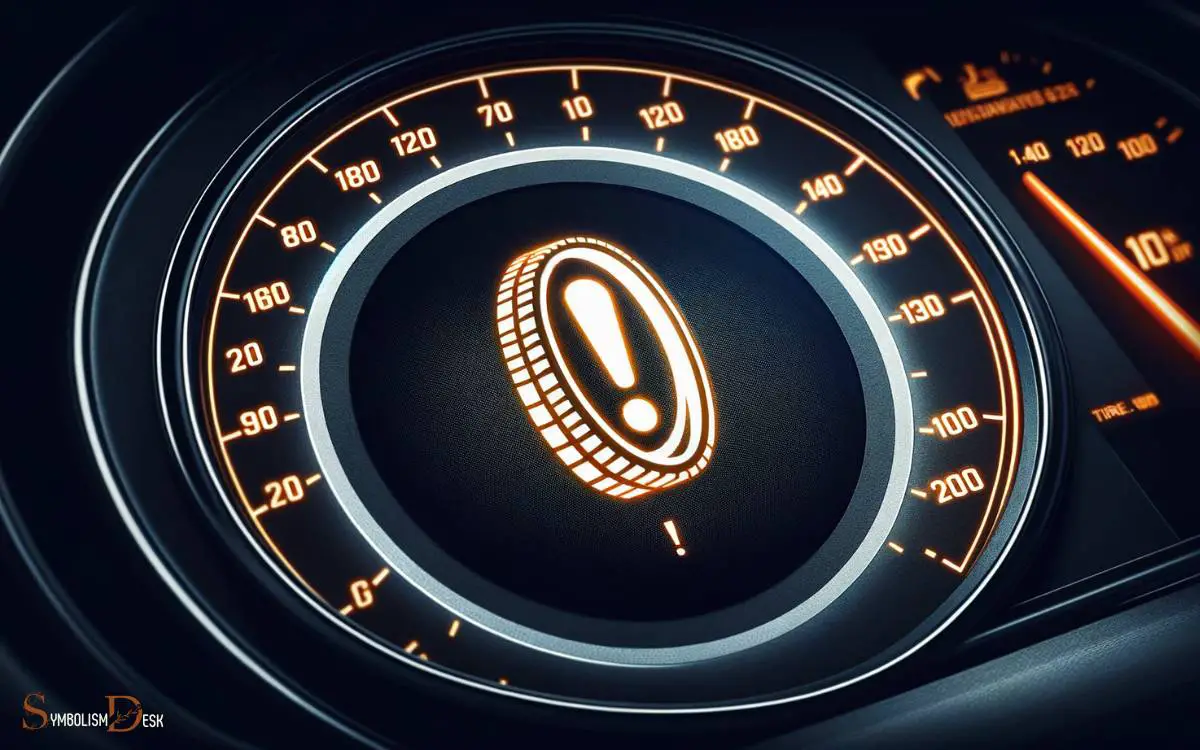
Tire pressure monitoring is a critical aspect of vehicle safety and performance. Warning light indicators are designed to alert drivers of potential tire pressure issues.
Proper maintenance, including regular tire pressure checks and understanding the warning indicators, can help ensure optimal tire performance and vehicle safety.
Importance of Monitoring
One important aspect of vehicle maintenance is the tire pressure monitoring system, which helps ensure safe driving conditions.
Proper monitoring of tire pressure is crucial for several reasons:
- Safety: Maintaining the correct tire pressure ensures optimal traction, handling, and braking performance, reducing the risk of accidents.
- Fuel Efficiency: Underinflated tires increase rolling resistance, leading to decreased fuel economy. Monitoring tire pressure helps maximize fuel efficiency.
- Tire Longevity: Incorrect tire pressure can cause uneven tire wear, reducing the lifespan of the tires. Regular monitoring helps extend the life of the tires.
- Environmental Impact: Properly inflated tires reduce carbon emissions by improving fuel efficiency, contributing to a cleaner environment.
- Cost Savings: Monitoring tire pressure can prevent premature tire wear and improve fuel economy, ultimately saving money on tire replacements and fuel expenses.
Warning Light Indicators
An essential aspect of vehicle maintenance is the tire pressure monitoring system, which utilizes warning light indicators to alert drivers of potential issues.
When the tire pressure drops below the recommended level, a yellow exclamation mark inside a U-shaped symbol illuminates on the dashboard. If this light comes on, it signifies that at least one tire is significantly underinflated and requires immediate attention.
Some advanced systems can even display the exact pressure of each tire, helping drivers identify which tire needs inflating.
It’s crucial to address low tire pressure promptly as it can lead to reduced fuel efficiency, compromised handling, and increased risk of tire blowouts.
Regularly checking tire pressure and responding to warning light indicators can contribute to safer and more efficient driving.
Maintenance Tips for TPM
The maintenance of the tire pressure monitoring system (TPMS) is crucial for ensuring safe and efficient driving. Proper care and attention to the TPMS can help prevent accidents and ensure optimal vehicle performance.
Here are some important maintenance tips for TPMS:
- Regularly check tire pressure using a reliable gauge.
- Inspect the TPMS sensor for damage or corrosion during tire rotations or replacements.
- Ensure the TPMS sensors are relearned or reprogrammed after tire rotations or replacements.
- Keep the TPMS sensors clean from dirt, snow, or other debris to maintain accurate readings.
- If the TPMS warning light illuminates, promptly address the issue by checking tire pressure and inspecting the TPMS system for faults.
Airbag Indicator

The airbag indicator illuminates to alert drivers of potential airbag system issues. When the car is started, the indicator should light up briefly as part of the system’s self-check. If it stays on or flashes, there may be a problem with the airbag system.
This could indicate a malfunction in the airbags, the impact sensors, the electrical system, or the diagnostic module.
It is crucial to address any issues with the airbag system immediately, as the indicator being on could mean that the airbags may not deploy in the event of a collision.
Drivers should consult the vehicle’s manual or seek professional help to diagnose and resolve the problem, ensuring the safety of the vehicle’s occupants.
Coolant Temperature
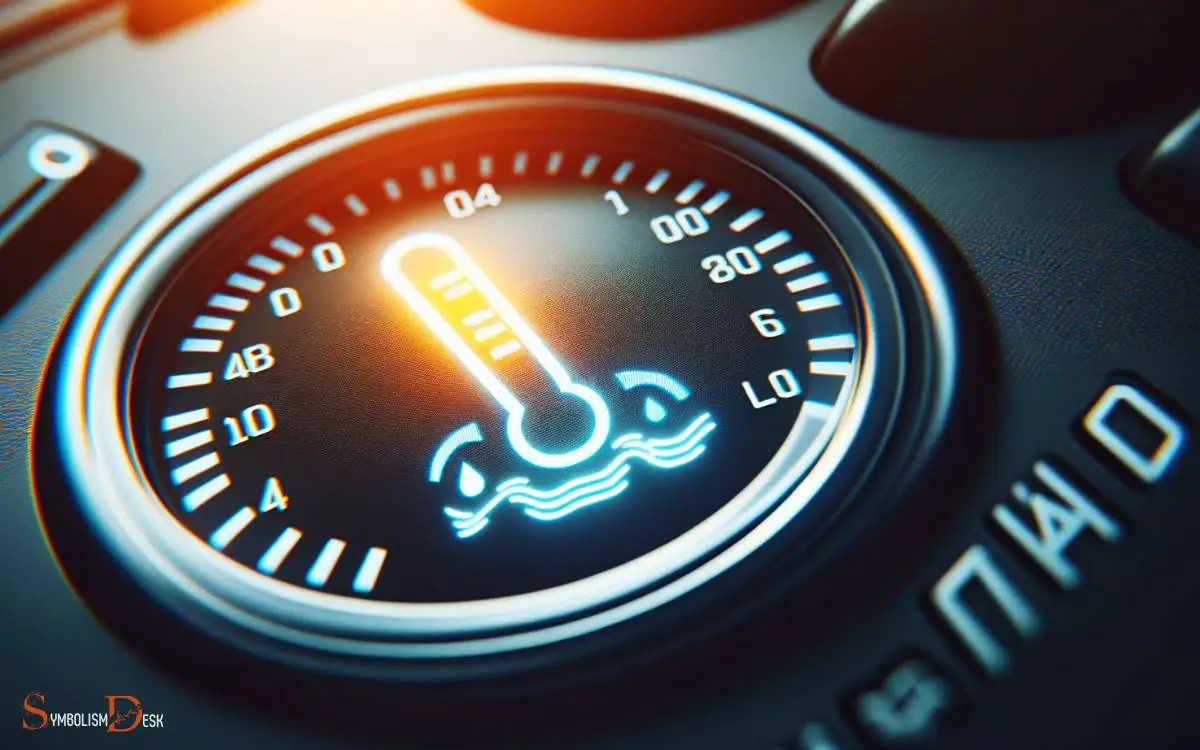
When monitoring a vehicle’s coolant temperature, drivers should pay attention to the gauge on the dashboard. Proper coolant temperature is crucial for the engine’s optimal performance and longevity.
Here are a few key points to consider:
- The normal operating temperature for most cars is around 195 to 220 degrees Fahrenheit.
- If the gauge shows the needle in the red zone or higher than normal, it indicates an overheating engine.
- An overheating engine can be caused by a variety of issues such as a coolant leak, a malfunctioning thermostat, or a faulty water pump.
- Continuing to drive with an overheated engine can lead to severe damage and costly repairs.
- It’s essential to pull over, turn off the engine, and allow it to cool down if the temperature gauge shows an overheating condition.
Fuel Level Warning
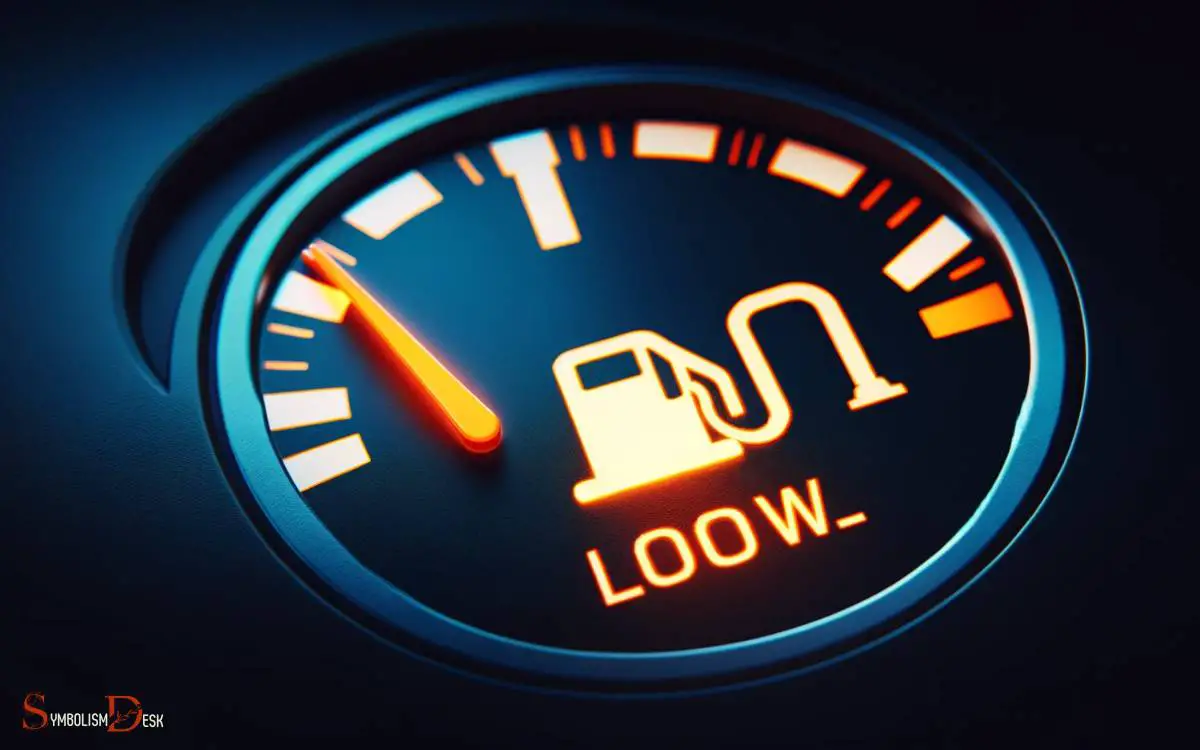
One should pay attention to the fuel level warning symbol on the dashboard to ensure they don’t run out of gas unexpectedly. This symbol typically looks like a gas pump or a gas pump with an exclamation mark.
When this light illuminates, it indicates that the fuel level is low and it’s time to refuel. Running out of gas while driving can be dangerous, especially on highways or in remote areas.
It’s important to take immediate action when this warning light comes on to avoid being stranded. Some vehicles also have a digital display that shows the estimated miles remaining before running out of fuel.
It’s crucial to familiarize oneself with these indicators to prevent being caught off guard by low fuel levels.
Conclusion
Car symbols serve as important indicators for drivers to take note of. Understanding these symbols can help prevent potential car issues and ensure safety on the road. They can range from simple reminders, like low fuel, to more serious alerts that require immediate attention. For example, the orange car warning light meaning typically indicates a less urgent issue, such as an engine check or maintenance reminder, but it should not be ignored. Staying informed about these symbols empowers drivers to address problems early and maintain their vehicle’s performance.
So, stay savvy and stay safe by staying attentive to the array of car symbols that signal potential trouble. Keep an eye out for these symbols and swiftly seek professional assistance to secure a smooth and safe ride.

